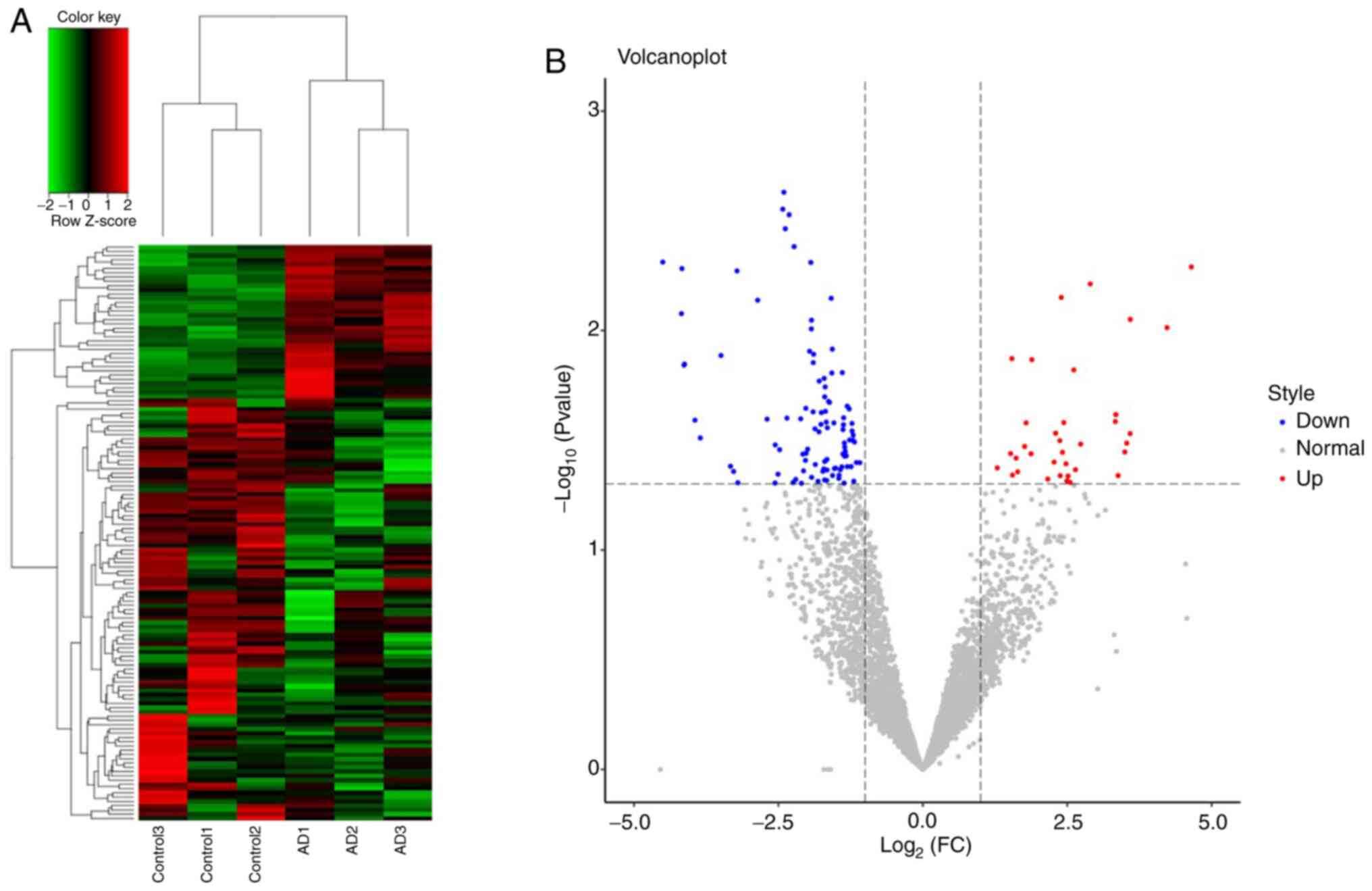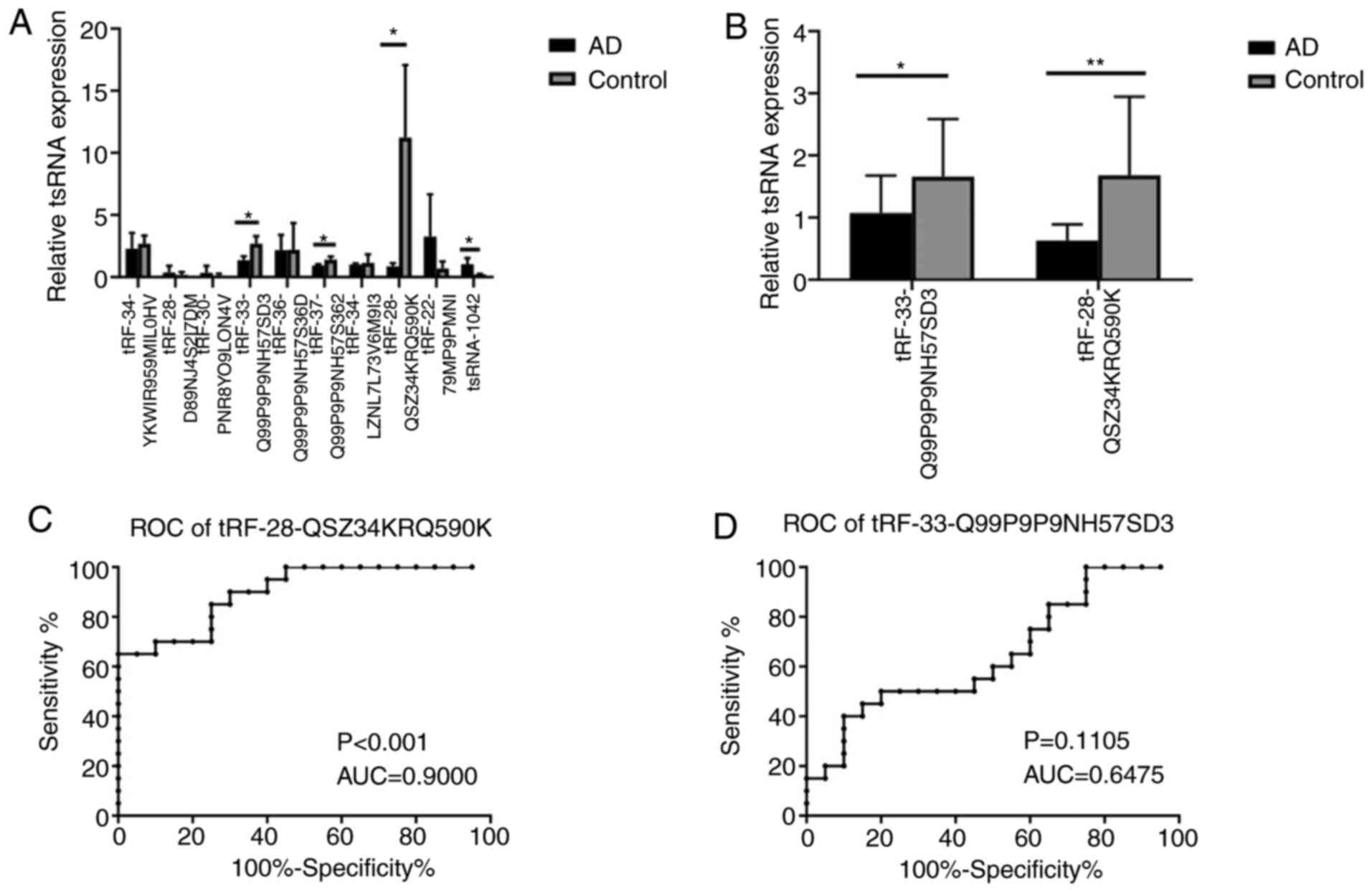|
1
|
Abrams EM and Sicherer S: Cutaneous
sensitization to peanut in children with atopic dermatitis: A
window to prevention of peanut allergy. JAMA Dermatol. 155:13–14.
2018.PubMed/NCBI View Article : Google Scholar
|
|
2
|
Bin L and Leung DY: Genetic and epigenetic
studies of atopic dermatitis. Allergy Asthma Clin Immunol.
12(52)2016.PubMed/NCBI View Article : Google Scholar
|
|
3
|
Guescini M, Genedani S, Stocchi V and
Agnati LF: Astrocytes and Glioblastoma cells release exosomes
carrying mtDNA. J Neural Transm (Vienna). 117:1–4. 2010.PubMed/NCBI View Article : Google Scholar
|
|
4
|
Miranda KC, Bond DT, McKee M, Skog J,
Paunescu TG, Da Silva N, Brown D and Russo LM: Nucleic acids within
urinary exosomes/microvesicles are potential biomarkers for renal
disease. Kidney Int. 78:191–199. 2010.PubMed/NCBI View Article : Google Scholar
|
|
5
|
Valadi H, Ekstrom K, Bossios A, Sjostrand
M, Lee JJ and Lotvall JO: Exosome-mediated transfer of mRNAs and
microRNAs is a novel mechanism of genetic exchange between cells.
Nat Cell Biol. 9:654–659. 2007.PubMed/NCBI View
Article : Google Scholar
|
|
6
|
Kumar P, Kuscu C and Dutta A: Biogenesis
and function of transfer RNA-related fragments (tRFs). Trends
Biochem Sci. 41:679–689. 2016.PubMed/NCBI View Article : Google Scholar
|
|
7
|
Ruggero K, Guffanti A, Corradin A, Sharma
VK, De Bellis G, Corti G, Grassi A, Zanovello P, Bronte V, Ciminale
V and D'Agostino DM: Small noncoding RNAs in cells transformed by
human T-cell leukemia virus type 1: A role for a tRNA fragment as a
primer for reverse transcriptase. J Virol. 88:3612–3622.
2014.PubMed/NCBI View Article : Google Scholar
|
|
8
|
Yeung ML, Bennasser Y, Watashi K, Le SY,
Houzet L and Jeang KT: Pyrosequencing of small non-coding RNAs in
HIV-1 infected cells: Evidence for the processing of a
viral-cellular double-stranded RNA hybrid. Nucleic Acids Res.
37:6575–6586. 2009.PubMed/NCBI View Article : Google Scholar
|
|
9
|
Guo Y, Bosompem A, Mohan S, Erdogan B, Ye
F, Vickers KC, Sheng Q, Zhao S, Li CI, Su PF, et al: Transfer RNA
detection by small RNA deep sequencing and disease association with
myelodysplastic syndromes. BMC Genomics. 16(727)2015.PubMed/NCBI View Article : Google Scholar
|
|
10
|
Martens-Uzunova ES, Jalava SE, Dits NF,
van Leenders GJ, Moller S, Trapman J, Bangma CH, Litman T,
Visakorpi T and Jenster G: Diagnostic and prognostic signatures
from the small non-coding RNA transcriptome in prostate cancer.
Oncogene. 31:978–991. 2012.PubMed/NCBI View Article : Google Scholar
|
|
11
|
Victoria Martinez B, Dhahbi JM, Nunez
Lopez YO, Lamperska K, Golusinski P, Luczewski L, Kolenda T, Atamna
H, Spindler SR, Golusinski W and Masternak MM: Circulating small
non-coding RNA signature in head and neck squamous cell carcinoma.
Oncotarget. 6:19246–19263. 2015.PubMed/NCBI View Article : Google Scholar
|
|
12
|
Kumar P, Mudunuri SB, Anaya J and Dutta A:
tRFdb: A database for transfer RNA fragments. Nucleic Acids Res.
43:D141–D145. 2015.PubMed/NCBI View Article : Google Scholar
|
|
13
|
Thompson DM and Parker R: Stressing out
over tRNA cleavage. Cell. 138:215–219. 2009.PubMed/NCBI View Article : Google Scholar
|
|
14
|
Lee YS, Shibata Y, Malhotra A and Dutta A:
A novel class of small RNAs: tRNA-derived RNA fragments (tRFs).
Genes Dev. 23:2639–2649. 2009.PubMed/NCBI View Article : Google Scholar
|
|
15
|
Goodarzi H, Liu X, Nguyen HC, Zhang S,
Fish L and Tavazoie SF: Endogenous tRNA-derived fragments suppress
breast cancer progression via YBX1 displacement. Cell. 161:790–802.
2015.PubMed/NCBI View Article : Google Scholar
|
|
16
|
Rajka G and Hanifin JM: Diagnostic
features of atopic dermatitis. Acta Dermato-venereologica.
60:44–47. 1980.
|
|
17
|
Severity scoring of atopic dermatitis. The
SCORAD index. Consensus report of the European task force on atopic
dermatitis. Dermatology. 186:23–31. 1993.PubMed/NCBI View Article : Google Scholar
|
|
18
|
Zhang L, Liu S, Wang JH, Zou J, Zeng H,
Zhao H, Zhang B, He Y, Shi J, Yoshida S and Zhou Y: Differential
expressions of microRNAs and transfer RNA-derived Small RNAs:
Potential targets of choroidal neovascularization. Curr Eye Res.
44:1226–1235. 2019.PubMed/NCBI View Article : Google Scholar
|
|
19
|
Mazzei M, Vascellari M, Zanardello C,
Melchiotti E, Vannini S, Forzan M, Marchetti V, Albanese F and
Abramo F: Quantitative real time polymerase chain reaction
(qRT-PCR) and RNAscope in situ hybridization (RNA-ISH) as effective
tools to diagnose feline herpesvirus-1-associated dermatitis. Vet
Dermatol. 30:e491–e147. 2019.PubMed/NCBI View Article : Google Scholar
|
|
20
|
Shen Y, Yu X, Zhu L, Li T, Yan Z and Guo
J: Transfer RNA-derived fragments and tRNA halves: Biogenesis,
biological functions and their roles in diseases. J Mol Med.
96:1167–1176. 2018.PubMed/NCBI View Article : Google Scholar
|
|
21
|
Soares AR and Santos M: Discovery and
function of transfer RNA-derived fragments and their role in
disease. Wiley Interdiscip Rev RNA: 8, 2017 doi:
10.1002/wrna.1423.
|
|
22
|
Zhang Z, Xiao C, Gibson AM, Bass SA and
Khurana Hershey GK: EGFR signaling blunts allergen-induced IL-6
production and Th17 responses in the skin and attenuates
development and relapse of atopic dermatitis. J Immunol.
192:859–866. 2014.PubMed/NCBI View Article : Google Scholar
|
|
23
|
Wu A, Chen H, Xu C, Zhou J, Chen S, Shi Y,
Xu J, Gan J and Zhang J: miR-203a is involved in HBx-induced
inflammation by targeting Rap1a. Exp Cell Res. 349:191–197.
2016.PubMed/NCBI View Article : Google Scholar
|
|
24
|
Kyriakis JM and Avruch J: Mammalian MAPK
signal transduction pathways activated by stress and inflammation:
A 10-year update. Physiol Rev. 92:689–737. 2012.PubMed/NCBI View Article : Google Scholar
|
|
25
|
Hirota T, Takahashi A, Kubo M, Tsunoda T,
Tomita K, Sakashita M, Yamada T, Fujieda S, Tanaka S, Doi S, et al:
Genome-wide association study identifies eight new susceptibility
loci for atopic dermatitis in the Japanese population. Nat Genet.
44:1222–1226. 2012.PubMed/NCBI View
Article : Google Scholar
|
|
26
|
Chen CP, Lin SP, Chern SR, Tsai FJ, Wu PC,
Lee CC, Chen YT, Chen WL and Wang W: A de novo 7.9 Mb deletion in
22q13.2→qter in a boy with autistic features, epilepsy,
developmental delay, atopic dermatitis and abnormal immunological
findings. Eur J Med Genet. 53:329–332. 2010.PubMed/NCBI View Article : Google Scholar
|

















